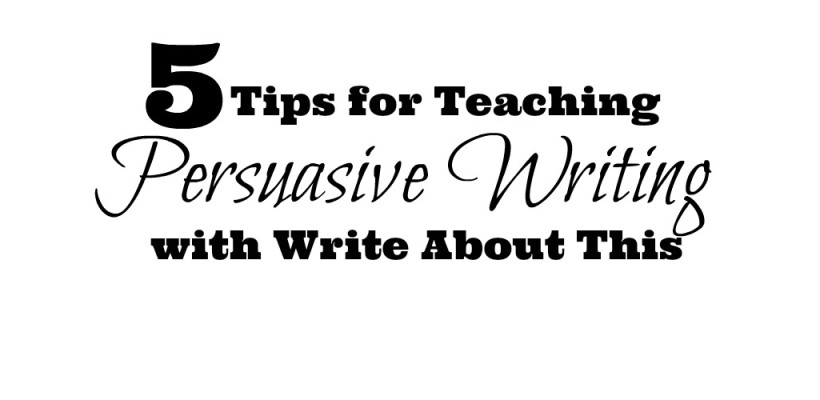
Persuasive writing is one of the more complex composition pieces students have to tackle. Along with the standard features of introduction and conclusion, persuasive essays are based on presenting arguments and evidence to debate any potential counterpoints. It can often become a difficult task for students to present evidence using effective and exquisite writing. The Write About This app can help students hone in on their arguments and flesh out evidence effectively. Here are 5 tips we think can help!
1. Prewrite using an image and/or text prompt (this can even be a custom prompt) so students can initially gauge their position on the issue. There is a wide variety of image prompts in the gallery with accompanying tiered question prompts to choose from. If students can’t find something they are interested in writing about, they can create their own custom prompt. 
2. Have students make lists of their arguments and all known/possible counterpoints. They should ensure each counterpoint has a valid rebuttal. This list can be completed as they gather research on the topic. Students can input their research directly into the Write About This app. 
3. Students can utilize their research and argument/counterpoint lists to participate in an informal group debate in class. This can be done orally in class or through the Write About a This app. Students can list all of their arguments and a partner can type their counterpoints after each argument. A group debate can expose students to alternative viewpoints and to practice delivering rebuttals based on evidence. To add another level of learning, partners can record their counterpoints in the Write About This app. This can provide a hybrid style of group debate that involves both written and oral formats.
4. Review the components of a persuasive essay and allow students to work on a single component each day. This can help the student maintain writing focus and stay organized. When working on each component in isolation, they’ll have plenty of opportunity to ensure they are including substantial appropriate evidence and providing effective arguments to present their case. 
5. Compile all components into one essay. Have partners read each other’s essays and record an audio response. Did the essay change their opinion or position? Why? Listening to a response in audio format can help students work on listening and oral communication skills.
Let us know what other strategies have helped your class and as always, we look forward to seeing what your students are writing about!
—
Lani deGuia is a teacher, instructional technologist, and social media manager. She has over 13 years of educational experience in traditional and online classroom settings for both K-12 and adult learners. She currently works in digital content and strategy for businesses and personally blogs at Rose Tinted Traveler.
